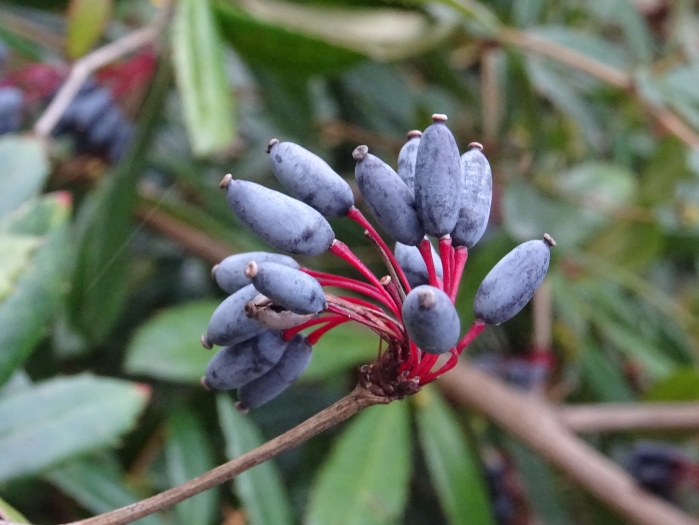Wintergreen Barberry
(Berberis julianae)
Wintergreen Barberry (Berberis julianae)
/
/

Olive Titus
CC BY 2.0


















































Estimated Native Range
Summary
Wintergreen Barberry is valued for its year-round foliage, making it an excellent choice for hedges, screens, and foundation plantings. It has earned the Royal Horticultural Society’s Award of Garden Merit, indicating its exceptional qualities in garden settings. It requires full sun to partial shade and adapts to a variety of soil types, provided they have good drainage. While it can tolerate medium to high water levels, it is also drought-tolerant once established. Gardeners should be aware that Berberis julianae can be invasive outside its native range, and it is important to consult local regulations before planting. Additionally, the plant may be susceptible to powdery mildew and rust, especially in humid climates.CC BY-SA 4.0
Plant Description
- Plant Type: Shrub
- Height: 4.5-6 feet
- Width: 4.5-6 feet
- Growth Rate: Moderate
- Flower Color: Yellow
- Flowering Season: Spring
- Leaf Retention: Evergreen
Growth Requirements
- Sun: Full Sun, Part Shade
- Water: Medium
- Drainage: Slow, Medium, Fast
Common Uses
Bank Stabilization, Bee Garden, Bird Garden, Border Plant, Butterfly Garden, Deer Resistant, Drought Tolerant, Edible*Disclaimer: Easyscape's listed plant edibility is for informational use. Always verify the safety and proper identification of any plant before consumption., Fragrant, Hedges, Low Maintenance, Salt Tolerant, Showy Flowers, Street Planting
Natural Habitat
Native to the forest understories and thickets of South Central and Southeast China
Other Names
Common Names: Chinese Barberry, Juliane-Berberitze
Scientific Names: , Berberis julianae, Berberis julianiae, Berberis julianae var. oblongifolia, Berberis julianae var. patungensis, Berberis julianae subsp. oblongifolia, Berberis julianae subsp. patungensis,
GBIF Accepted Name: Berberis julianae C.K.Schneid.